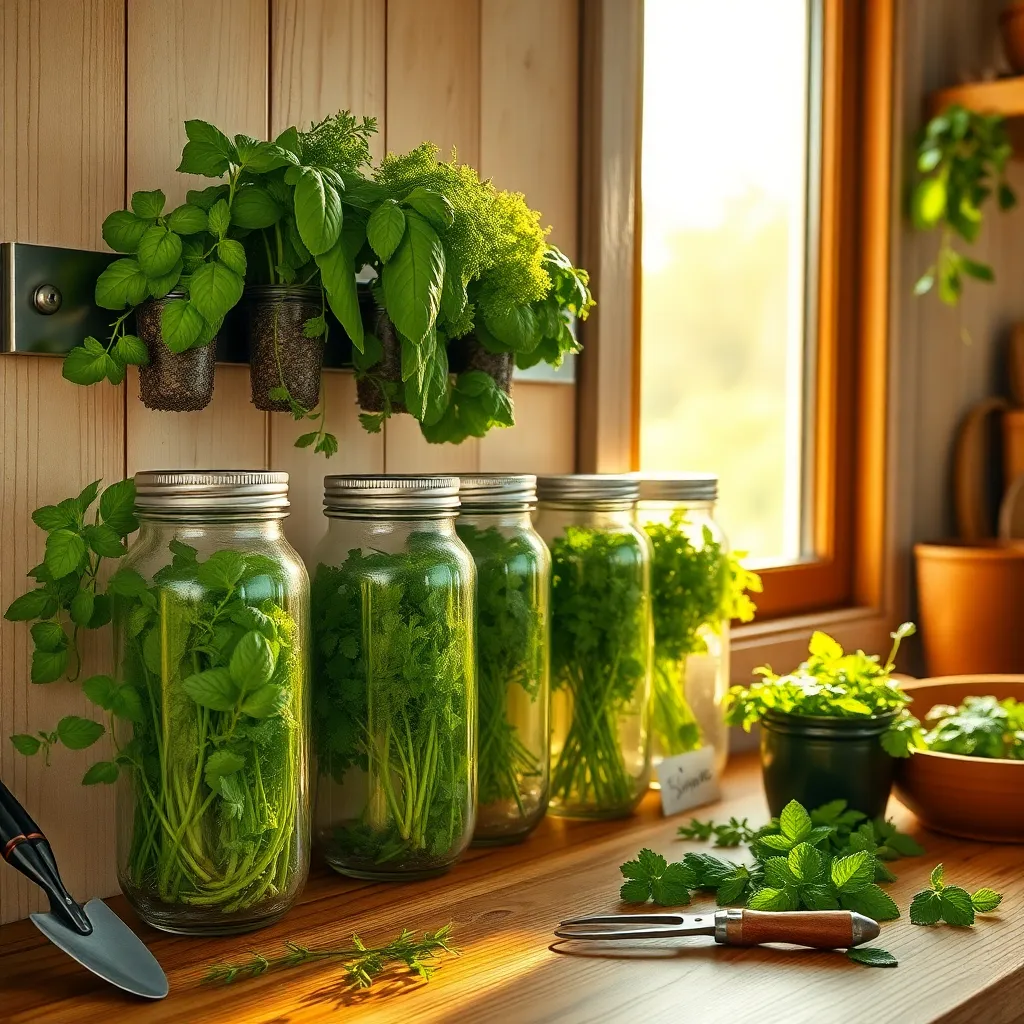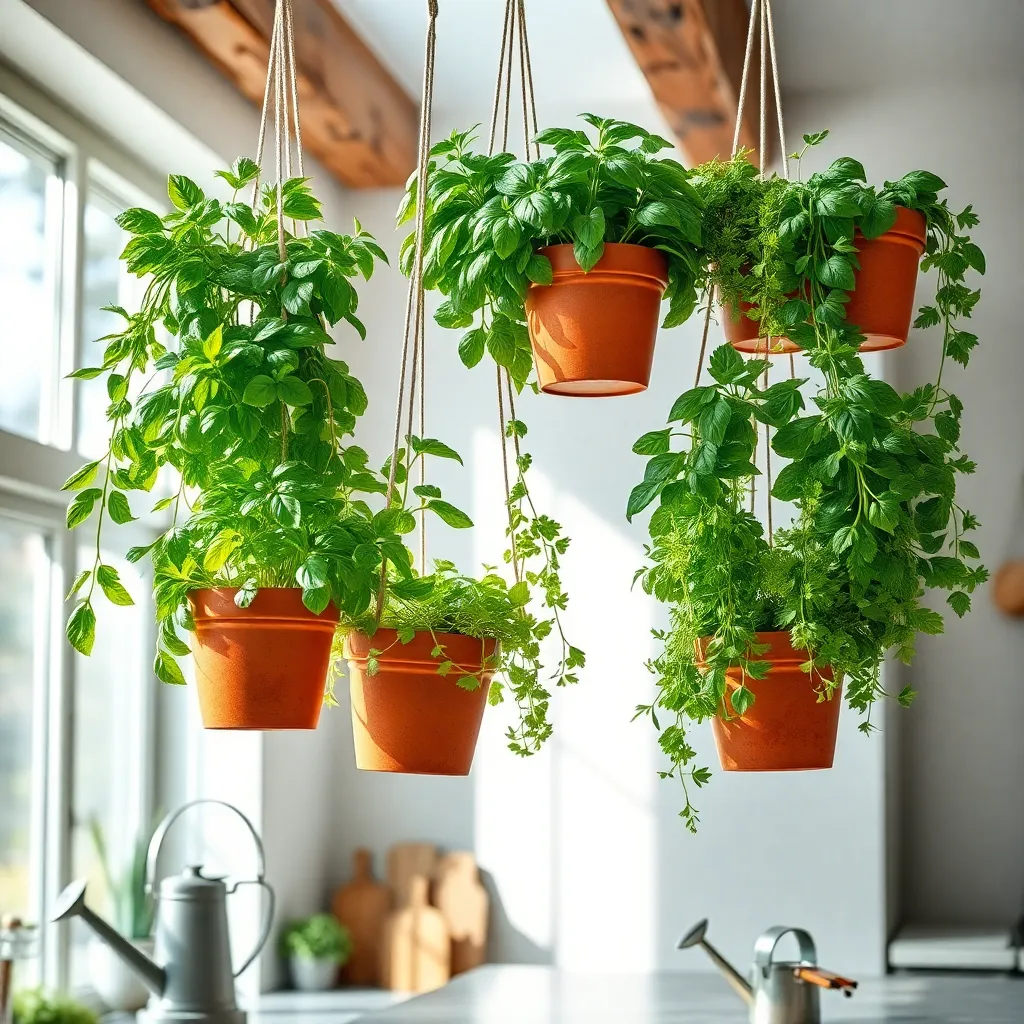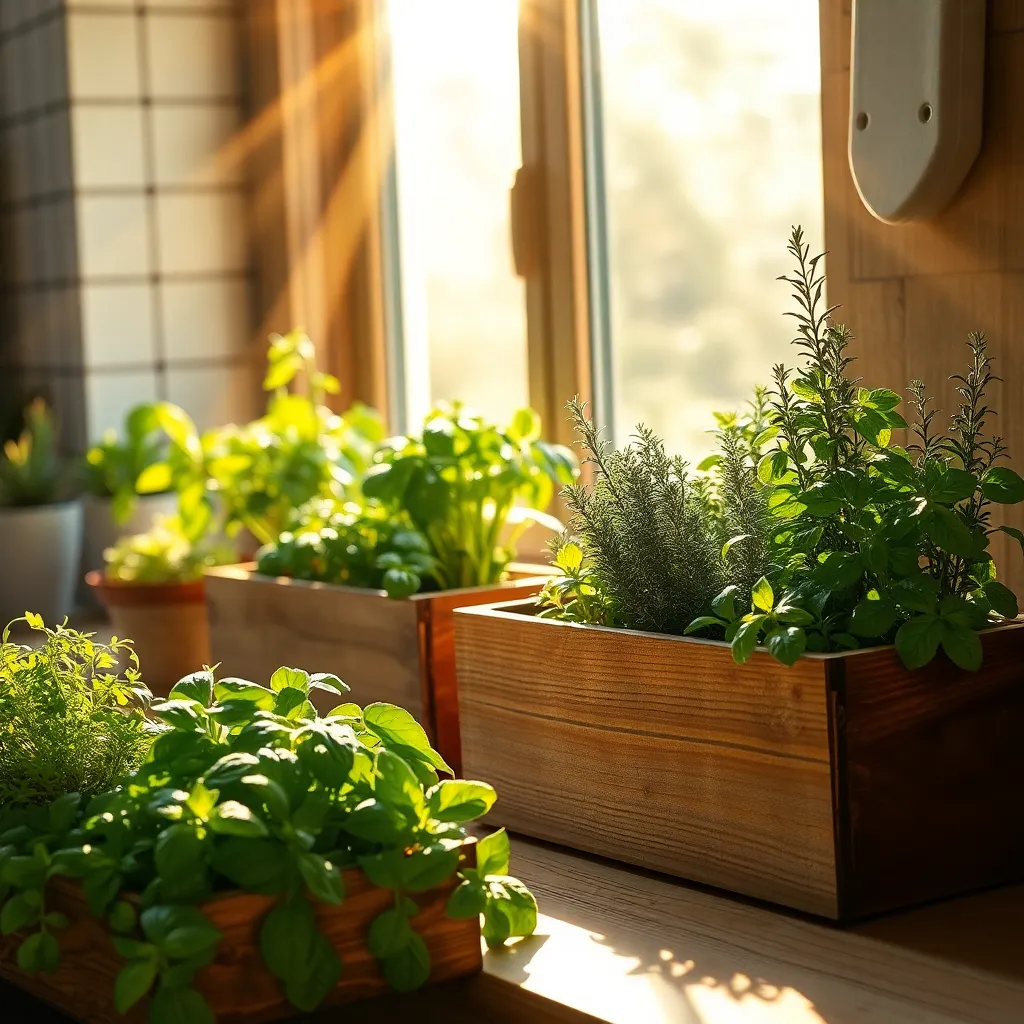Imagine stepping into your kitchen to find a vibrant oasis of herbs at your fingertips, ready to infuse your cooking with fresh, aromatic flavors. Whether you’re a budding gardener just starting out or a seasoned green thumb looking to expand your indoor garden, “Creative Ways to Grow Herbs in Your Kitchen” is your gateway to cultivating a delicious, homegrown pantry. This guide is packed with innovative ideas that transform even the smallest spaces into flourishing herb gardens, making it a must-have for anyone eager to enhance their culinary creations.
From maximizing your windowsill space to utilizing vertical gardening techniques, you’ll discover practical ways to nurture your favorite herbs right where you cook. Not only will these methods bring the joy of gardening into your daily routine, but they’ll also offer the satisfaction of harvesting fresh ingredients at a moment’s notice. With easy-to-follow advice tailored for all experience levels, you can confidently embark on your journey to a kitchen brimming with life and flavor. Embrace the rewarding world of homegrown herbs and watch your kitchen—and your meals—bloom with success.
Utilize Vertical Planter Racks

Vertical planter racks are a fantastic way to conserve space while growing your favorite herbs indoors. By utilizing vertical space, you can easily manage a variety of herbs in a small area, making it ideal for kitchen environments.
Start by selecting a well-lit area in your kitchen, as herbs like basil, parsley, and thyme thrive in bright, indirect sunlight. A south or west-facing window is typically ideal, ensuring your herbs get the light they need to flourish.
Choose soil that drains well, such as a mix of potting soil and perlite, to prevent root rot. Water your herbs regularly, keeping the soil moist but not soggy; a general guideline is to water when the top inch of soil feels dry.
For beginners, start with easy-to-grow herbs like mint or cilantro, which can adapt well to various conditions. More advanced gardeners might try growing rosemary or oregano, which require slightly more attention to light and temperature.
Install Magnetic Herb Jars

One innovative way to grow herbs in your kitchen is by installing magnetic herb jars. These jars can be attached to any metal surface, such as the side of your refrigerator, freeing up valuable counter space.
Choose clear, sturdy jars with strong magnets to ensure they can support the weight of the soil and plants. It’s crucial to select jars with lids that can seal properly to avoid spills while still allowing for easy access when watering.
When selecting herbs, opt for varieties that thrive in small spaces, like basil, thyme, or mint. These herbs require minimal soil and can adapt well to the limited environment of a jar.
To maintain healthy plants, use a lightweight, well-draining potting mix to prevent waterlogging. Watering should be light but frequent, ensuring the soil is moist but not soggy, as excessive moisture can lead to root rot.
For a more advanced approach, consider using jars with a small drainage layer at the bottom, such as pebbles or activated charcoal. This extra step helps to further enhance drainage and keep your herbs thriving even in compact conditions.
Repurpose Mason Jars as Pots

Mason jars are not just for canning; they make excellent containers for growing herbs right in your kitchen. Their transparent nature allows you to monitor root growth and soil moisture, ensuring your herbs thrive.
To get started, fill your mason jar with a high-quality potting mix suitable for herbs, such as a well-draining mix that includes perlite or vermiculite. This ensures your herbs receive the necessary aeration and drainage, preventing root rot.
Plant your chosen herb seeds or seedlings into the soil, covering them lightly. Some popular choices include basil, mint, and parsley, which all flourish in the kitchen’s warm environment.
Place the jars in a spot where they will receive at least six hours of sunlight daily, like a windowsill. If sunlight is limited, consider using a full-spectrum grow light to supplement their light requirements.
Water your mason jar herbs carefully, as overwatering can be a common issue. Aim to keep the soil consistently moist but not soggy, checking moisture levels by touching the top inch of soil.
For more advanced gardeners, consider adding a layer of small pebbles or activated charcoal at the bottom of the jar before the soil. This provides extra drainage and helps prevent odors, keeping your kitchen herb garden fresh and healthy.
Create a Hanging Herb Garden

Transforming your kitchen into a lush oasis is easy with a hanging herb garden. Start by selecting herbs that thrive in indoor conditions, such as basil, parsley, and thyme, which all enjoy bright, indirect light.
Hanging planters come in various styles, from macramé hangers to metal racks, offering versatility for your kitchen space. Opt for planters with good drainage to prevent root rot—a common issue with indoor plants.
For soil, use a light potting mix that retains moisture while allowing excess water to drain. Herbs grown indoors typically require watering once a week, but always check the soil moisture first.
Advanced gardeners can experiment with companion planting in their hanging garden. For example, pair basil with chives to enhance growth and flavor while maintaining pest control.
Use Windowsill Planter Boxes

Utilizing windowsill planter boxes is an excellent way to grow herbs in your kitchen, adding both beauty and functionality to your space. These compact containers fit perfectly on most windowsills, providing your herbs with the natural light they need to thrive.
Choose a planter box with good drainage, as herbs require well-drained soil to prevent root rot. Adding a layer of gravel or small pebbles at the bottom can help improve drainage and keep your herbs healthy.
Fill your planter box with a high-quality potting mix that contains a blend of peat, perlite, and vermiculite for optimal growth. This soil mix ensures that your herbs receive the necessary nutrients and maintain moisture without becoming waterlogged.
Water your herbs regularly, but be sure not to overwater, as this can lead to fungus and other issues. A general rule is to water when the top inch of soil feels dry to the touch, which usually means watering once or twice a week depending on the humidity in your home.
For beginners, start with easy-to-grow herbs like basil, parsley, and chives, which thrive indoors and require minimal maintenance. Advanced gardeners might try growing more challenging herbs like rosemary or thyme, which need slightly more attention and occasional pruning.
Conclusion: Growing Success with These Plants
In this exploration of nurturing both your herbs and your relationships, we delved into five key concepts: the importance of a strong foundation, the art of consistent care, letting time nurture growth, the value of creating a supportive environment, and the beauty of small, everyday gestures. Just as herbs flourish with the right conditions, so too do relationships when these principles are applied.
As a next step, consider setting aside a few moments today to share a small act of appreciation with someone you care about, much like tending to a young plant. This gesture, though simple, can have a profound impact on the health and happiness of your relationship.
We encourage you to bookmark this article as a handy guide for revisiting these nurturing strategies. By saving it, you’ll have a ready resource to inspire ongoing growth and harmony in your connections.
Remember, the success of any relationship lies in the dedication to grow and adapt together. By incorporating these nurturing techniques, you’re on the path to cultivating vibrant and lasting bonds. Let’s continue to blossom and thrive in our relationships, one mindful action at a time.
